György Zala travelled to Florence because of marble sculptures in the early 1900s. However, his journey had another important purpose: he was commissioned by the Hungarian state to contact Italian contractors involved in sculpture casting, as there were not enough specialists or foundries in Hungary to cast the sculptures for the Millennium Monument. The Florentines, however, had a great tradition of casting sculptures.
Portrait of Raffaelo Vignali (Photo: A Magyar Ipar almanachja, 1929-1932)
Following György Zala's journey, negotiations began with the Florentine company of the Vignali brothers, and as a result, Gusmano and Raffaelo Vignali undertook to establish a sculpture foundry in Hungary. The Vignali brothers were also accompanied to Budapest by foundry master Lamberto Galli, and they started the business together in 1904. Eleven Italian specialists joined them.
Work on the Bocskai statue by Barnabás Holló in the foundry (Photo: Vasárnapi Ujság, 21 February 1909)
Work began by shaping and casting the statues of the Millennium Monument in wax at 175 Váci Road, in the factory building where the foundry of Alexander Markus Beschorner and his son had previously operated. Among the royal statues of the monument, the statues of Matthias Corvinus, Ferdinand I, Béla IV, Charles Robert and Leopold II were completed in 1905, as well as two symbolic groups of statues entitled "Work and Prosperity" and "Knowledge and Glory".
One of the first results of their work in Budapest was Gyula Bezerédi's statue of George Washington, erected in 1906 in City Park.
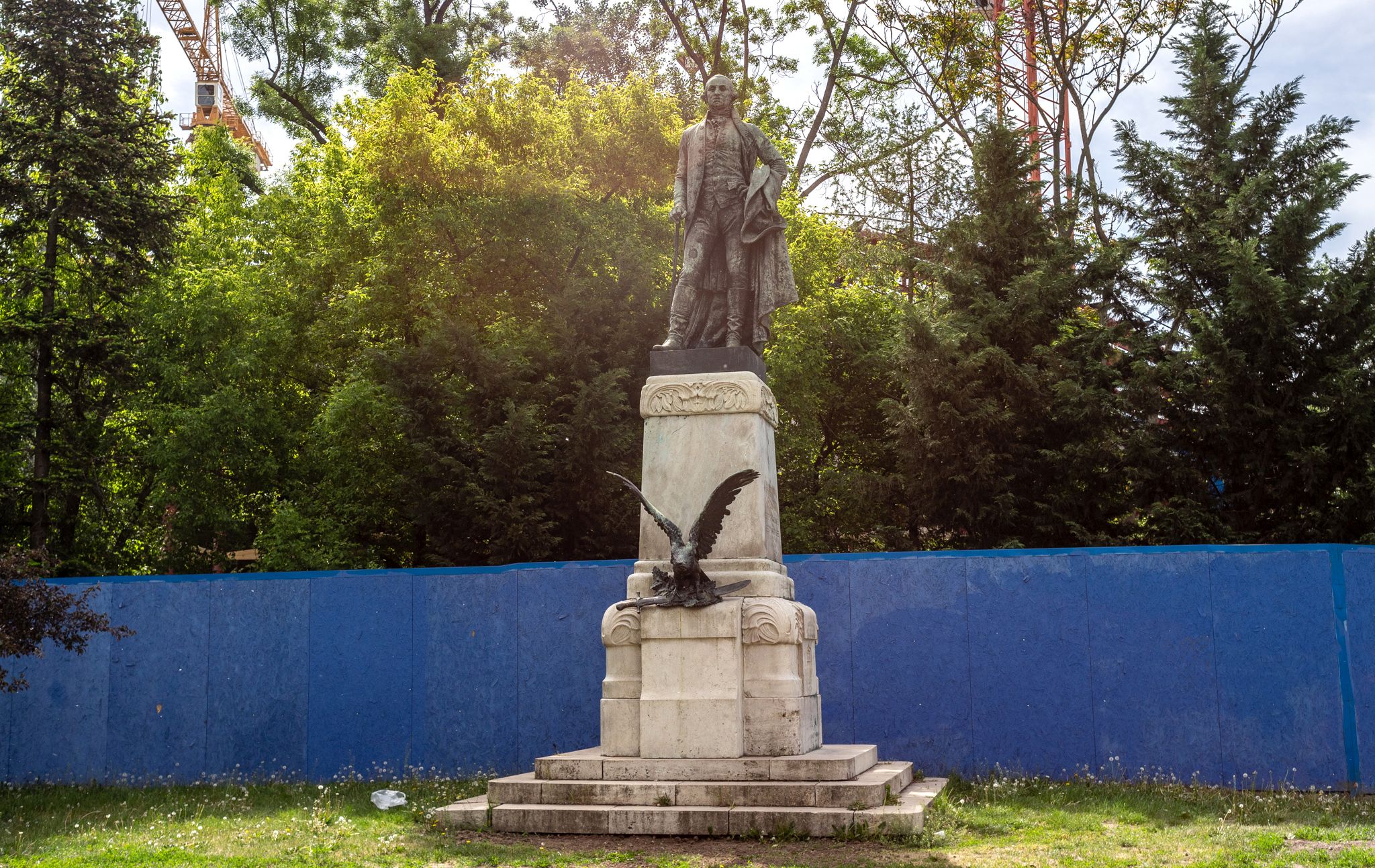
Statue of George Washington, made by Gyula Bezerédi, in City Park today (Photo: Balázs Both/pestbuda.hu)
According to surviving press releases from the first years, the company was owned by Lamberto Galli and Gusmano Vignali. However, they, along with several foundry workers, returned to Florence a few years later, mainly due to financial difficulties as the company was in the red and the workers could not get used to the cooler climate in Hungary. Of course, an attempt was made to save the invested 200,000 lire of capital, so Raffaelo, the younger Vignali, remained in Budapest and took over the management of the foundry.

Lamberto Galli and Gusmano Vignali were listed in the Budapest address and apartment register for the 1905-1906 year as the owners of the foundry. The name of Raffaelo Vignali cannot be found in the document.
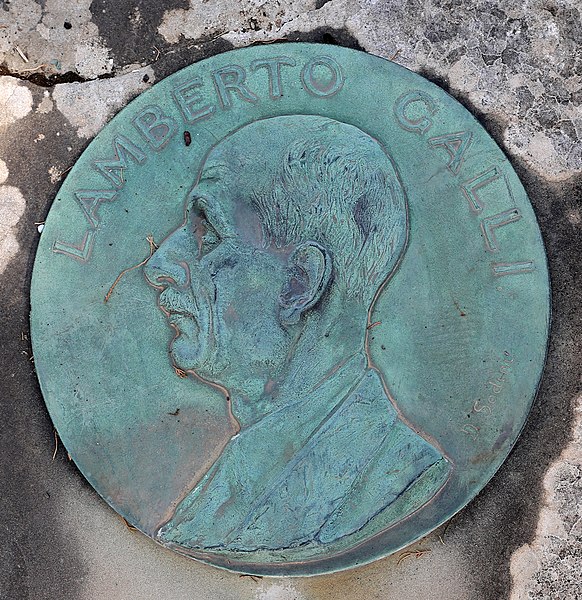
Bronze plaque on the tombstone of Lamberto Galli in the Soffiano cemetery in Florence (Photo: Wikipedia)
Raffaelo Vignali was born in 1877 in Pistoia, Tuscany, Italy. He moved to nearby Florence, where he learned the craft of casting and then opened his foundry with his brother.
The casting of the Millennium Monument sculptures took a long time; meanwhile, Vignali – leaving the factory building on Váci Road – rented a building at 12 Szabó József Street in Zugló, where the foundry of the sculptor József Róna used to operate.
The years after World War I brought great upheaval in the life of the company. The foundry was (of course) nationalised by the Hungarian Soviet Republic, and the Millennium Monument was also in danger. The statues of the Habsburg kings were removed in April 1919, and by 1 May, the building was covered with red drapery. When the papers published the obituary of Vignali two decades later, the statement of the Hungarian Telegraph Office (Magyar Távirati Iroda) wrote: "It is to his credit that the Millennium Monument was not demolished during the commune; he faced down the terror guards risking his life."
Pesti Hírlap wrote in the 13 November 1921 issue:
"The head of the foundry, Rafaelo Vignali, although an Italian citizen, also proved to be a great Hungarian because, during the proletarian dictatorship, he placed the works of art in his workshop that the leaders of the dictatorship wanted to crush under Swiss protection. Thanks to him, the statues of the Millennium Monument in City Park were not destroyed. He outright refused to break them up and melt them."
After the fall of the Hungarian Soviet Republic, it turned out that Tibor Szamuely had urged the removal of the statues of the monument, saying if the work did not go fast enough, he would blow them up, as there was enough dynamite for it.
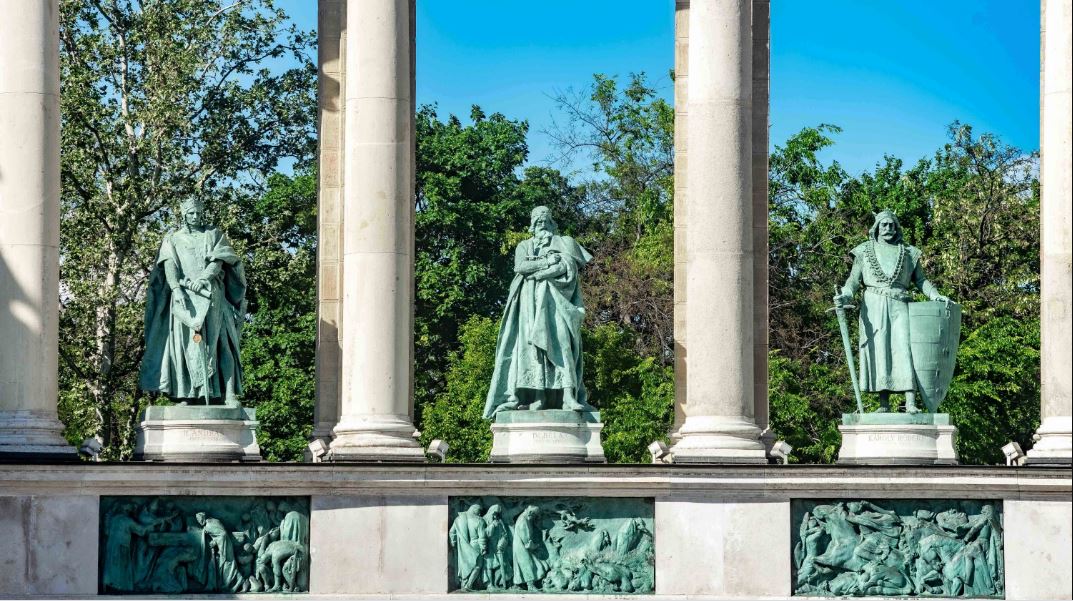
Detail of the Millennium Monument. After the death of Raffaelo Vignali, obituaries highlighted the role of the Italian master in saving the monument in 1919 (Photo: Balázs Both/pestbuda.hu)
The fall of the Hungarian Soviet Republic was followed by another interesting event. The foundry was threatened with bankruptcy as the ministry's debt of nearly 34,000 Hungarian golden koronas was not paid.
The Italian master was offered a new opportunity at the time to put his financial situation in order. The Romanian state wanted to establish a foundry in Oradea (Nagyvárad, after the Trianon Treaty, it became a part of Romania), mainly in connection with the construction of the Romanian king's equestrian statue in Cluj-Napoca (Kolozsvár). Vignali said yes, which then opened new opportunities in the Balkans: he soon received Turkish and Bulgarian commissions.
It was during these years that he had to take part in the demolition of the Statue of Liberty in Arad, a work of György Zala – which is especially painful for Hungarians – to transport the statue to Hungary. However, the transfer never happened as the Hungarian and Romanian parties could not agree on the conditions. Fortunately, the statue, which was demolished in 1925 but remained in Arad, was not destroyed, and on 6 October 1999, it was transported from its previous storage location, the Arad Castle trench, to the courtyard of the Minorite monastery, where it was restored. Then it was erected on Szabadság Square, today's Avram Iancu Square.
Installation of the statue of Huba (one of Seven Chieftains) at the Millennium Monument. Raffaelo Vignali in the lower left corner of the picture (Photo: Bányászati és Kohászati Lapok – Öntöde, 1957/3 Issue)
Vignali left the Romanian "adventure" successfully and was able to restart his factory on Szabó József Street, which had often been referred to as Hungária Foundry since the early 1920s. Casting the statues of the Millennium Monument continued, and the monument was inaugurated on 26 May 1929. The work at the Szabó József Street factory was completed in 1928, by which time Vignali was ready to move: he soon opened its new site at 74 Jász Street in Angyalföld.
As mentioned, during the casting process, Vignali's factory used a method called wax casting, in which a wax sample is first made between the inner casting core and the outer shell, and then hot bronze is poured into its place.
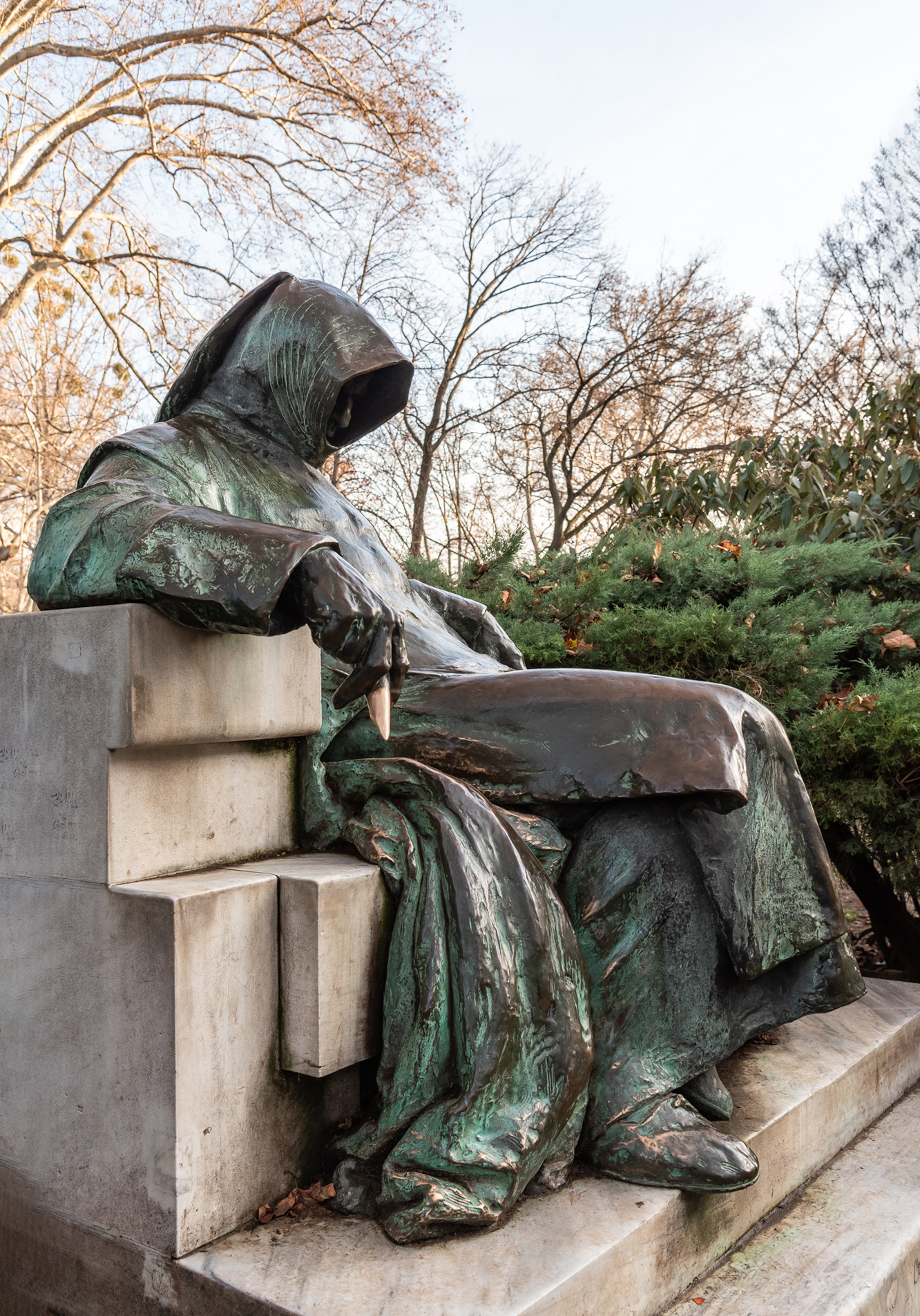
The statue of Anonymus by Miklós Ligeti, one of the characteristic works of Budapest, was also made in the Vignali Foundry (Photo: Balázs Both/pestbuda.hu)
It is difficult to count which of the capital's sculptures came from the Vignali foundry. Perhaps the most famous of them are the statue of Miklós Ligeti's Anonymus, the statue of Queen Elizabeth by György Zala, the monument to the takeover of Buda Castle on Bécsi kapu Square by Béla Ohmann and the Rákóczi equestrian statue by János Pásztor on Kossuth Square.
After World War II, the Liberation Monument of Zsigmond Kisfaludi Strobl on Gellért Hill, commonly known as the Statue of Liberty, was also made here. But by this time, Raffaelo Vignali's son – who, like Raffaelo's brother, was called Gusmano – ran the factory, which was then nationalised in 1949.
Raffaelo Vignali among his workers in the early 1930s. In the background the newly completed statue of Queen Elizabeth made by György Zala (Photo: Bányászati és Kohászati Lapok - Öntöde, 1957/3 Issue)
Raffaelo Vignali died at the age of 63 in 1940 in his chosen homeland, Budapest, Hungary. An admirer of his oeuvre, László Jakóby, wrote about him in The History of Hungarian Sculpture Foundry (Artificial Casting) in the 1957/3 issue of Bányászati és Kohászati Lapok - Öntöde:
"Raffaelo Vignali was a humane man who treated his workers with understanding, love and elegance and regaled them generously after every successful major work."
Standing in front of the masterpieces of our Hungarian sculptors, remember him for a moment, the Italian master who cast their works into bronze.
Detail of the Millennium Monument in Heroes' Square (Photo: Balázs Both/pestbuda.hu)

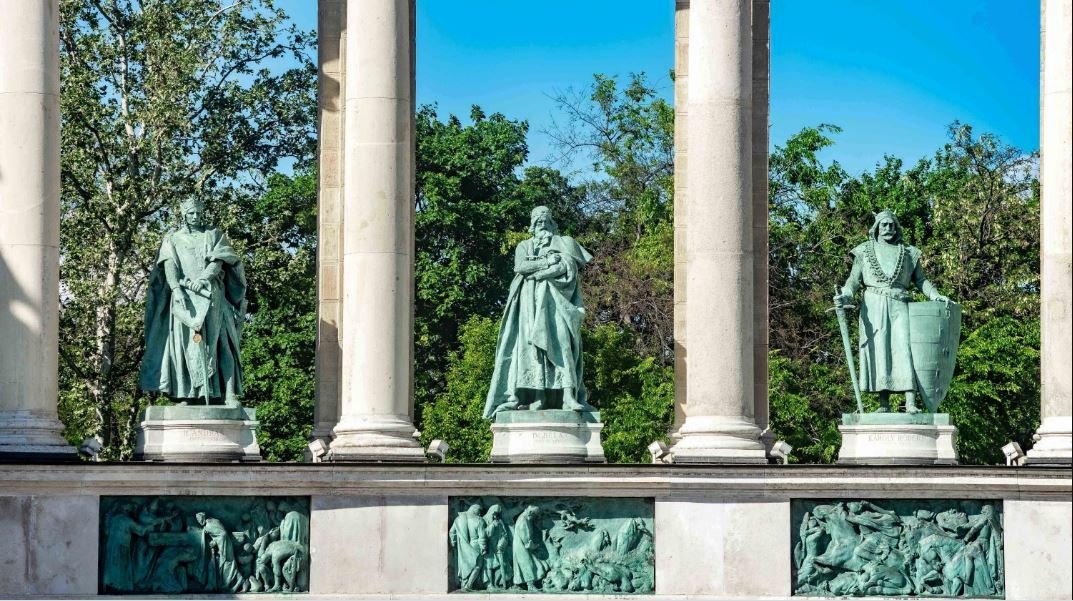



































Hozzászólások
Log in or register to comment!
Login Registration